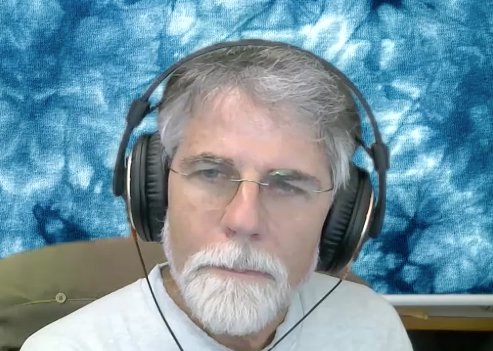Student Recordings
created under Michael’s supervision
JAZZ
Michael Hauser
Fascination with his parents' player piano led to early piano lessons and lifelong passions for both music and technology. As a teen, he built his own music synthesizer and computer. He studied jazz, electronic music, and computer science at UNT. He has played piano and keyboards in various groups, composed and played on a number of albums, scored films and multimedia productions, musically directed live performances, fabricated multimedia installations, performed on live radio and TV, taught music privately, and developed and taught music classes. His teachers have included: Michael Smolens & Frank Martin (piano/composition); Bonnie Hayes, Steve Seskin & Stephanie Bruce (songwriting); Mark Levine, Marcos Silva & Dick Hindman (piano).
“Bliss Slipping”
. . . is a tune I originally wrote 15 years ago. More recently, I worked on the melody, form, and arrangement with Michael's helpful input and feedback. It was originally a somewhat melancholy piece, played on piano and sung without words, but evolved into something more upbeat as I arranged it. I plan to write a lyric for it, and I'm thinking that it move back in the other direction as I write a lyric and further develop the melody around that.
“The Love of a Dog”
I wrote this one in 2019 and then developed it further this past year with Michael's help. It was always meant to have a lyric, and I've started on that just recently. I'll adjust and develop the melody further around the lyric.
“Tern’s Turns”
written as a quick exercise for Frank Martin's jazz composition class in '20 and then, based on Michael's feedback and suggestions, extended it and evolved the melody, form, and arrangement. The bird sounds at the beginning and end are recordings of Arctic Terns.
Vivian Quinn Sayles
Vivian (1940-2016) studied theory, arranging, and composition with Michael from 1989-1994. She produced a subsequent CD in 2000 called "California Celtic", melding her love of jazz and Celtic musics. Unlike her first recording, she is heard here on piano and the personnel includes revered players Matt Eakle (flute), Jeremy Cohen (violin),Mark Summer (cello), Davis Ramey (guitar), and Maureen Brennan (Irish harp).
The following tracks are excerpts unless otherwise noted.
“Manchester Park”
bluesy swing
“Slow Lovin’”
slow gospel
“Two Brewskies, Please”
medium-up bop
“To Romance”
chamber / complete work
“A Moment in Time, 1912”
even-eighths
“Thank You, Isaac”
jazz waltz
Michael Slater
Michael is a professional saxophonist and band leader who has performed jazz and funk styles in live and recording settings. He studied both piano and improvisation on his main instrument with Michael for five years privately. He also attended numerous workshops and 12-week jazz ensemble classes that he co-structured with Michael.
“Cosmotology”
performed by Michael Smolens / score










